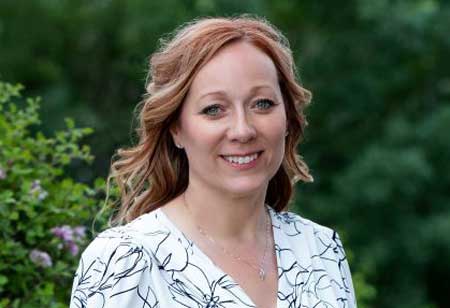Thank you for Subscribing to Healthcare Business Review Weekly Brief

Community Paramedicine and its Benefits for Provincial Health Systems
Healthcare Business Review
The formal definition of Community Paramedicine (CP) is just as it sounds. Community-based care where paramedics apply their training and skills to those in need. What’s unique about this type of professional is that Paramedics are providing health care in a "non-traditional" community-based environment, often outside the usual emergency response and transportation models. The Paramedics apply a combination of core training, specialized skills and protocols.
Sherri Julé is the Director of Emergency Medical Services, North and for the SHA’s Community Paramedicine Program. She has been leading this work since 2011 within the Saskatchewan Health Authority
“Community Paramedicine has been around for quite some time and continues to be very innovative,” said Julé. “It allows Paramedics to work in the community and apply specialized skills to a very unique subset of the population in their home or close to their home. This type of care not only makes it easier on the patients, but on the system itself by supporting timely access to medical care for patients, where otherwise it may take hours or even days depending on where you live in Saskatchewan. This approach supports patients in their homes by enabling local teams to deliver care.”
It’s important to note that CP is a resource that can be available as part of a larger, more comprehensive team. The care team may consist of Physicians, Nurse Practitioners (NP), Home Care staff, Registered Nurses (RN), Registered Psychiatric Nurses (RPN), Licensed Practical Nurses (LPN), Primary Care Paramedics (PCP), Intermediate Care Paramedics (ICP), Advanced Care Paramedics (ACP), Emergency Medical Responders (EMR), Critical Care Paramedics (CCP) and allied health professionals that support patients in the CP setting.
The CP program within the SHA adheres to patient centred care goals (what is desirable/acceptable care for the patient) alongside the desired care environment for the patient, which is usually outlined during the planning stages of an individual’s care plan. This plan would consider the patients’ (and family’s) care goals as well as staffing needs.
“Currently in Saskatchewan we have a number of CP teams that augment available services by collaborating with many health care professionals, patients and families. These working relationships not only allow teams to provide better care, they also support patient flow for acute care and emergency departments. All of our CP programs are quite flexible by design. Currently 44 ground ambulance services in the province participate in CP,” said Julé.
CP can be considered as an additional resource to both patients and health care providers. Paramedics are available, in the community, when requested and most importantly do not replace existing people or programs. The most effective CP program is one that builds bridges and collaborates between and within local care teams.
CP services can include, but are not limited to-
• Clinical Assessments & Diagnostics
• Oxygen Administration
• Catheter Care
• Dressing Changes
• IV therapy
• Medication Assistance
• Mobility Assistance
• Vital Sign Monitoring
• Clinical Illness/Disease Surveillance
• Emergency Department Supports
• Breakthrough Pain Management
• Wellness Checks
“When you look at all of the services a Paramedic working in the community can bring to client care, it identifies how working with care teams can help alleviate some of the time constraints care providers may be feeling,” said Julé. “Since the SHA launched the CP program, the data shows that around 90 per cent of the patients it served were cared for right in their home. Those are people not making a trip to a physician’s office, an emergency department or a hospital. It is encouraging to see the progress we’ve made since the program began.”
Community Paramedicine has been around for quite some time and continues to be very innovative.”
The CP program within the SHA is moving forward in a strong way. The program administrators have put together a CP orientation process that is being used province-wide; it has an online orientation module for all new to CP ground ambulance services; work standards are in place so everyone can follow processes easily and have access to them whenever they’re required; and Paramedics have constant access to training that may be specific to a patients’ needs.
“I look forward to the future of CP in Saskatchewan,” said Julé. “We want to keep working with care teams within the system, help care for patients in their own homes and communities, collect more data so we can make a stronger case for this type of care and work with other jurisdictions so we can build an even stronger network.”









